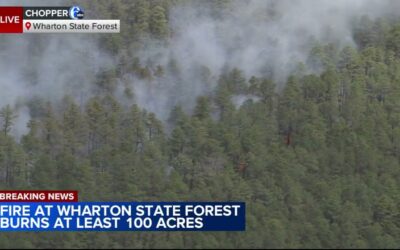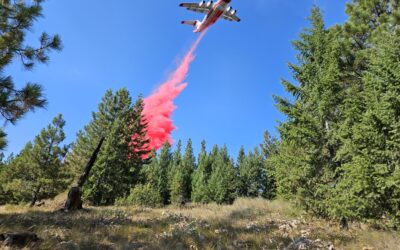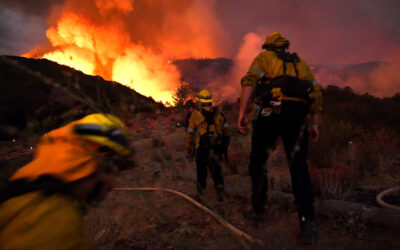I am confident that most of you reading this would agree that we are in an era of fire years, not fire seasons. Wildland fires are now more numerous, destructive, prolonged, and impactful than at any point in our nation’s history. We have a plethora of causal factors that have been identified, and only some of them can we control at the individual or agency level. The solution is complex; the path forward is long; and there will be disagreements in the future as to how, why, and who is responsible for this current state.
All those issues are significant and will not be exiting the discussion stage anytime soon; regardless, we as a fire service have to be ready to respond—every day, every year, safe and effective. We need to focus on what each of us can do to best prepare ourselves and our team for responses in the wildland fire environment. We need to collectively understand that this is a dynamic and dangerous incident type that appears to be occurring with more frequency and severity in atypical regions when compared to historic data.

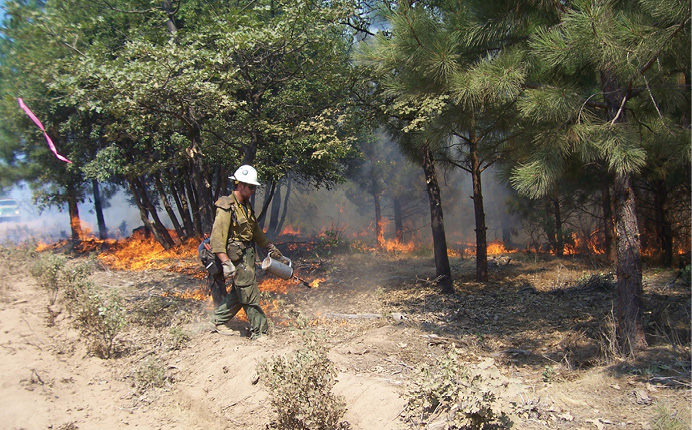
Photos by author.
Of the many forms of preparation we do for wildland fires, annual refresher training is a foundational cornerstone. I know this brings back memories of redundant and tired talking points and frequent mind-wandering thoughts as you stare out a window, but please, hear me out. I encourage everyone to think about wildland refresher training not with dread but rather as a potent tool we can use to make a positive and lasting impact on our safety. How, do you ask, can this be possible? Simple.
Redundant learning is what you will recall in a split second when exposed to stress caused by unexpected change or something that is new. Stress is an undeniable/unpreventable reaction that you experience; there is no way to stop it. There is no amount of yoga, meditation, or herbal remedies that will eliminate the stress reaction in your body, and stress interrupts rapid critical thinking and situational awareness. I am talking about the “fog of war” concept or “cognitive dissonance” that humans experience in high-stress environments. This reaction is well-studied and well-documented in task-saturated, time-compressed, resource-poor and high-stakes environments.
So, how do we mitigate this reaction? One of the easiest ways to reduce stress in the wildland is to spend time prior to engaging in training and discussions about the topic of wildland firefighting and wildland urban interface operations. Conduct a thorough evaluation of some basic categories, such as hazards in the response area, response capabilities, cooperators’ capabilities, and the fuels and fire history in the region. These are just a few of the important categories to evaluate during refresher training, but they are a great starting point. By including this information in your annual wildland training, you are by default updating the collective situational awareness of the responders to the current situation. When this process is repeated over time, the information becomes engrained in the minds of the participants, and that is exactly what they will recall when engaged in wildland suppression.
Simply put, the refresher training covers relevant issues specific to your response area, agency, and region and reduces surprises. Surprise in a high-stakes activity like wildland fire suppression only adds to the stress of the situation and degrades one’s ability to process the dynamic events. I would like to see the surprise reduced to only “pleasant surprise” with statements like “That wasn’t as bad as I expected” or “We caught that fire faster than I expected.” Tragic surprise is what is dangerous: “I didn’t see that coming” or “Rapid deterioration of fire conditions was not expected.” I like to say that we will be shocked by what the current era of mega fires is producing in the form of fire behavior and intensity, but I never want that to be a surprise.
During your refresher training, have an exercise of preplanning those areas in your first due that have the potential for a rapidly expanding wildland incident. Make it a point to know to the greatest degree possible all potential interactions of fuels, weather, and topography in your area. If you don’t have elevated potential in your immediate response area, then use areas that your agency will most likely go to based on historic responses and proximity.

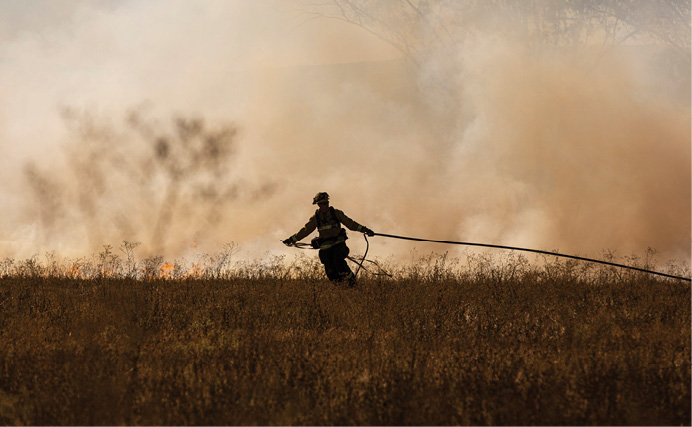
I am an advocate of using past incident maps and incident action plans to conduct scenario training. Use the powerful memories associated with a significant wildland fire event that your members participated in to conduct additional exercises. These “paper fire” exercises afford us great refresher training by way of discussion of wildland issues, all while using the tools we will have in our hands at the next fire assignment.
I cannot overstate, repetitive scenarios under realistic conditions and in familiar topography will add to an individual’s knowledge base. Thorough understanding of the highest-risk wildland areas will directly reduce the stress levels when the event does eventually occur. This concept is commonly known as “recognition primed decision making” and is another automatic response of the human brain when faced with a new situation. If you put more information into the library while training, you will have an easier time recalling an appropriate response, and that equates to a reduced stress reaction in the individual.

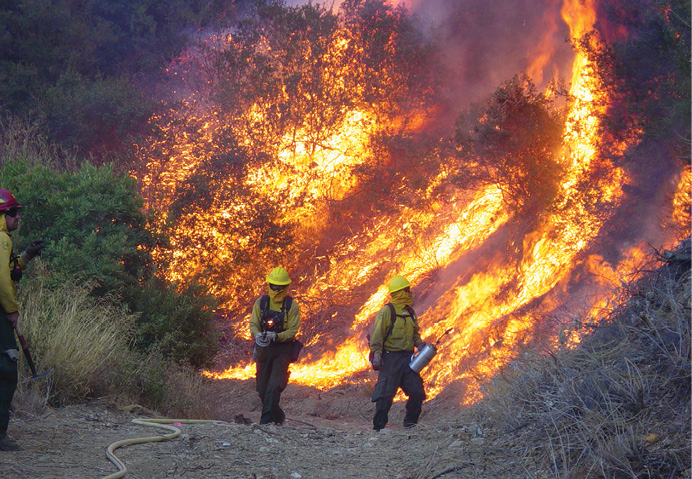
During scenarios at refresher training, a wildland firefighter must remember to start with the basic analysis of fuels, weather, and topography. These “ingredients” that influence each other and are directly linked can interact in a multitude of combinations, yielding both favorable and unfavorable fire behavior. It is the resultant fire behavior produced by the ingredients that determines our actions; our effectiveness; and, ultimately, our safety.
The goal of this frequent analysis is to keep an accurate awareness of the fire potential at hand to produce behavior that could negatively impact personnel safety. The ingredients on any given day, in any given location, combine in a recipe to produce a product. The product of this unique site and time-specific recipe is the observed fire behavior. Change any one of the ingredient’s parameters, and the fire behavior will change.
Instinctively, all firefighters know this interrelationship of ingredients, but applying these instincts in a timely manner is the key to safe operations. A firefighter’s ability to process all the variables and analyze potential improves with experience and training but is unfortunately subject to distraction, fatigue, complacency, stress reaction, and a multitude of other factors that erode our effectiveness in this important task. There is no doubt that fire behavior is a dynamic force that moves; breathes; accelerates; slows; propagates; and, in some cases, defies logical thought. Even the most seasoned veteran personnel underestimate the potential. However, this fact should just strengthen the resolve of all personnel to consistently, frequently, and accurately evaluate the fire’s potential.
The power of wildland refresher training is potent. The repeated discussion helps all store vital information about their response area and the potential for dangerous wildland events. This practice, by default, adds knowledge that is immediately recalled when in a challenging firefight. This stored intelligence is one of the most powerful ways to reduce the stress reaction when operating in a time-compressed, task-saturated, high-stakes environment. Treat the wildland refresher training like the powerful tool it is. Make the training impactful, relevant, current, and engaging. You will realize the benefits in the upcoming fire deployments, and the knowledge will stay with you for the rest of your career.
Todd McNeal is a 28-year veteran of the fire service and chief of the Dixon (CA) Fire Department. He has served on a Federal Incident Management Team for 15 years in the Operation Section and has deployed to numerous large-scale wildland fire incidents. He is a registered instructor and delivers wildland fire training to his members and cooperating agencies throughout California.

